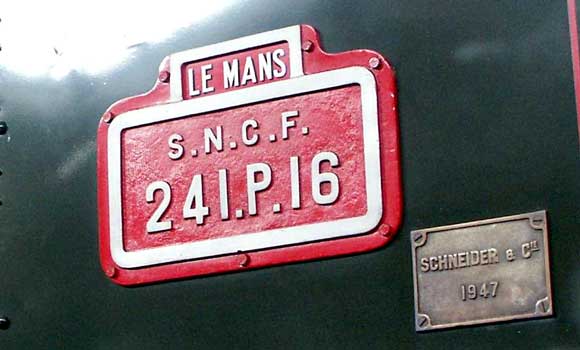
At
the French National Railway Museum, Mulhouse
'Le Musée Français du Chemin de Fer'
May 30 2003 &
October 9 2003

241P16, displayed with a Le Mans shed plate was built by Schneider & Co for the SNCF in 1947. October 9 2003

241P16 is one of the larger locomotives on display. The 241Ps were derived from the PLM 241C. They were something of a compromise and thus were not as good as they really should have been. However within the restriction of the post war era Chapelon did manage to make some useful thermodynamic enhancements during the design process. These locomotives were mechanically fired and could produce in the region of 3000 drawbar horsepower. May 30 2003
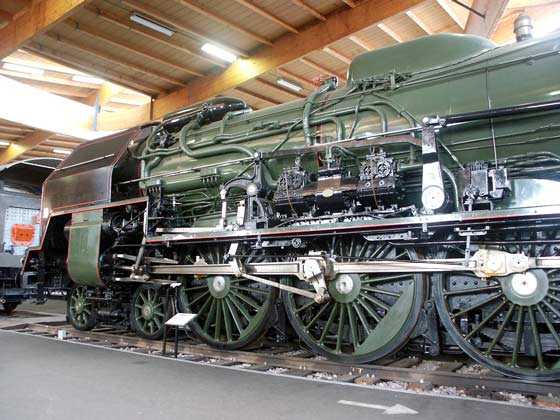
Compared to the likes of the 240Ps and 242A1 the 241Ps were not the tidiest looking loco with pipework everywhere and the reversing gear is very prominent. Also visible in this view are parts of the ACFI type feedwater heating system. May 30 2003
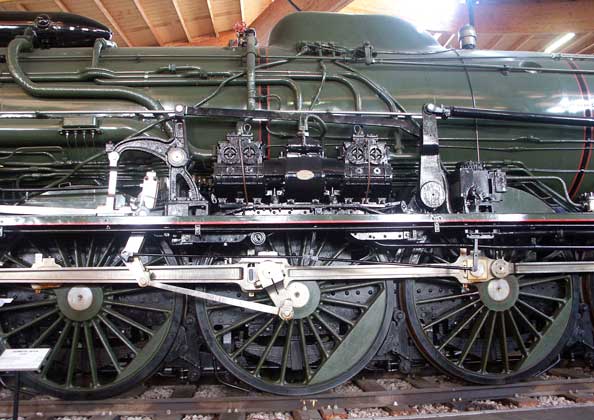 |
The
ACFI feedwater pump is surrounded by the substantial reversing gear. The
centre section of the ACFI pump is the actual pump whilst the cold water
was pumped from the righthand side and the heated water from the lefthand
side. October 9 2003 |
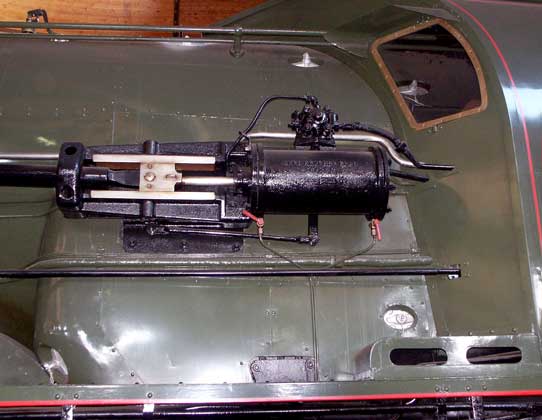 |
In
later life many of the 241Ps were fitted with power reverse gear from
141Rs. This shows the Franklin type of power reverse cylinder. 241P16
was in service from 1950 to 1973. May 30 2003 |
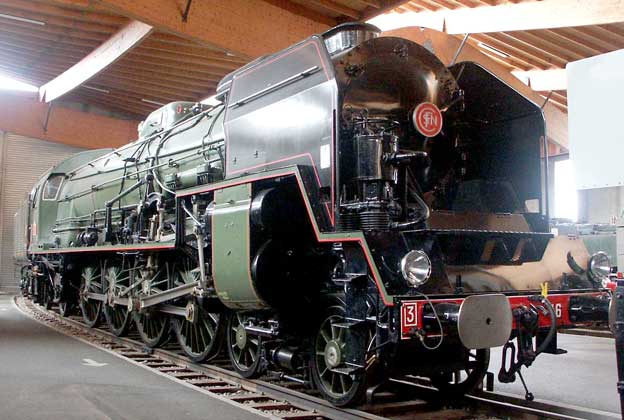
241P16 seen from the other side showing the air pump location. The frames of these locomotives were not really strong enough to absorb the power the locomotives could produce, but axle loading restrictions precluded making them any stronger. The inadequate frames flexed too much making the locomotives susceptible to hot axle boxes. Typical of most compounds derived from PLM types there was one reverser with a fixed ration between the cutoff in the high and low pressure cylinders. October 9 2003
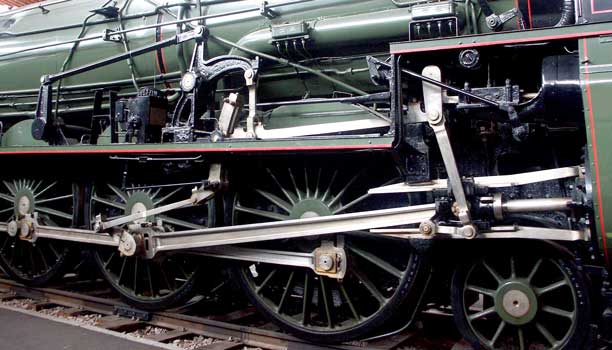
A close up view of the right hand side motion. Being copied from an early PLM type the 241Ps retained much of the layout. The high pressure cylinders are inside the frames whilst the outside low pressure cylinders have outside admission piston valves. October 9 2003
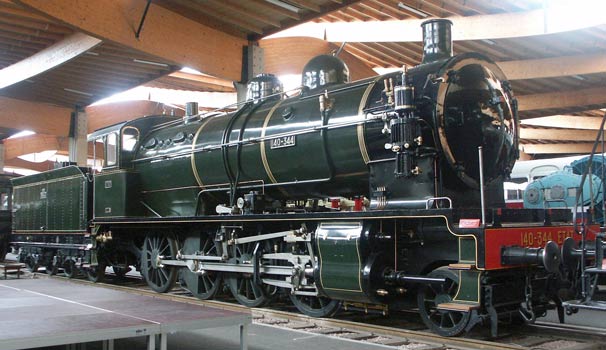
2-8-0 140-344 is displayed away from the rest of the steam locos but is none the less kept in immaculate condition. October 9 2003
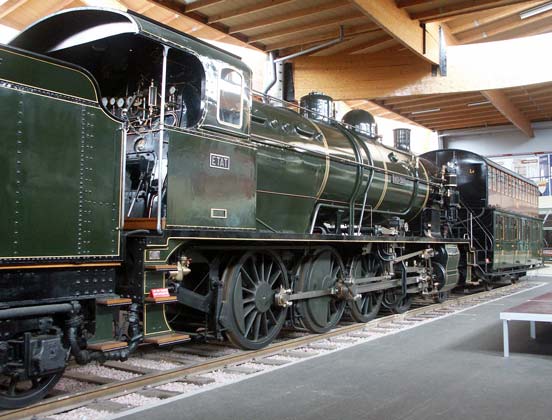
2-8-0 140-344 is an Etat system two cylinder simple. In SNCF days this locomotive was classified as class 140C. In front of the loco is an early double deck carriage. October 9 2003
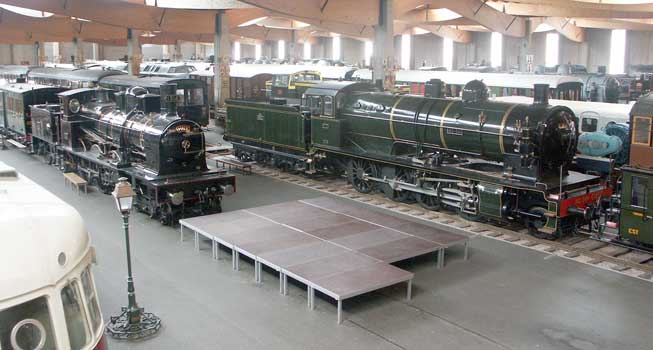
On the left is Midi Railway 4-6-0 1314 and on the right Etat Railway 2-8-0 140-344. October 9 2003

4-6-0 1314 is a de Glehn type compound built for the Midi Railway. This locomotive is right hand drive, most French locomotives being left hand drive. Before the formation of the SNCF the Midi and Paris Orleans systems merged. October 9 2003
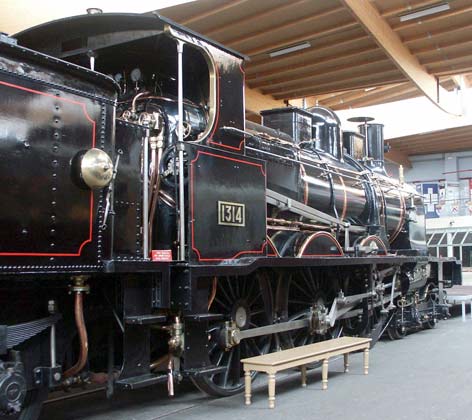 |
Midi
1314 displays an interesting feature. The bell on the tender was a early
passenger alarm. Just how effective this would be above the noise of a
working locomotive is debatable ! October 9 2003 |
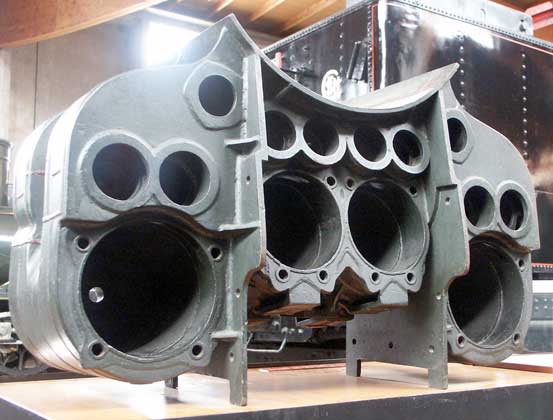
Before the rebuilding of a Paris Orleans 6000 Class 2-10-0 as a 2-12-0, 160A1, a model was constructed of the front set of low pressure cylinders. This view shows the front of the cylinder block. The high pressure cylinders were positioned further back down the locomotive driving on to the forth coupled axle. The locomotive was equipped with Lentz Oscillating Cam Poppet valves operated by Walschaerts valvegear. October 9 2003
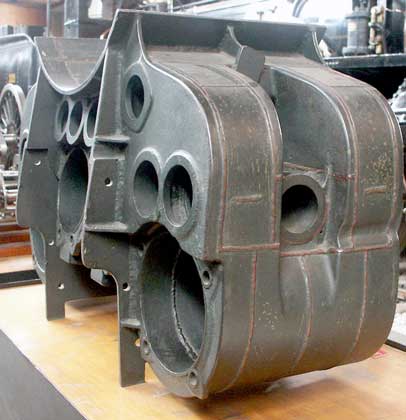 |
Sadly
160A1, despite being a highly successful prototype, was not preserved
so the model cylinder block is the only item left. 160A1 was scrapped
in November 1955. October 9 2003 |
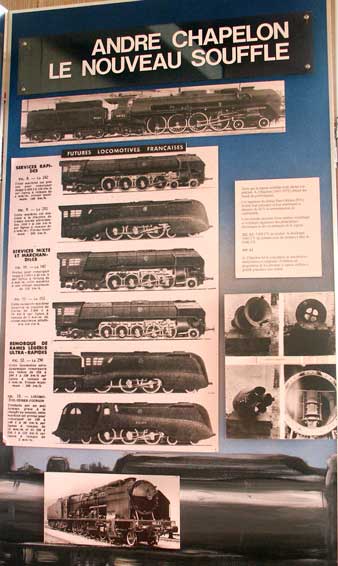 |
This
display shows a photograph of 160A1. It is the bottom most locomotive.
All the other illustrated were Chapelon's proposed standard post war steam
fleet for the SNCF. Sadly none were built as the SNCF elected to electrify.
However the 152P, the third locomotive down, was fully designed and some
components were actually constructed before work was halted. Work had
also started on the 4-6-4 tank illustrated at the bottom. An excellent
description of these types can be found in 'Chapelon - Genius of French
Steam'. October 9 2003 |

An interesting model on display is this one of a trapezoidal shaped firebox. October 9 2003